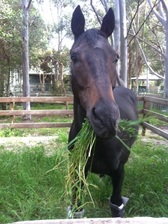
It has long been proven that horses should have access to roughage for as many hours each day as possible, but does this mean we should spend a fortune giving them all an unlimited supply of hay so that they never run out? Not necessarily. Eating too much, becoming over-weight and eating too quickly are not ideal for the horse either. Enter the slow feeder hay-net – a great way to drip feed your horse’s rations. However, we all know that feeling of frustration when you have to fill hay-nets late at night or early in the morning. The resulting hay splinters and tangled hay-nets. Luckily for you, we’ve come up with a design that solves all of life’s problems (well, when it comes to feeding hay to your horse!) and you can find out how to make one here. But first, let’s remind ourselves why it’s worth all the hassle of slow feeding.
Slowing your horse’s rate of eating has a number of positive effects…
Slowing your horse’s rate of eating has a number of positive effects…
- It encourages the horse to chew eat mouthful for longer which produces more saliva, a great way to buffer the acid in the stomach, aid digestion and keep the gut working as it is designed to.
- It means that the ration will last for much longer than when fed in a bucket, on the floor, or in an easy access hay-net or hay-bag. We’ve found it takes the horse around 3 to 4 times as long to eat from the slow feeder and up to 5 or 6 times as long in some cases. This not only means the horse’s stomach is full and working as it should for longer, it also reduces boredom and associated issues for yarded or stabled horses.
- It helps to save mess and wastage. None of us want to spend hours raking trampled, wet or manured-on hay from our yards – not to mention watching the hard-earned money we have spent on hay for our horses be put on the muck-heap when it has been prematurely soiled. The slow feeder reduces the amount of hay trampled in to the ground and if they don’t eat it all up in one meal, they’re sure to finish it up later on.
While we think horses have adapted to our lifestyles, in reality they haven't. The horse has evolved over the past 55 million years in to the horse we know and love. Just 6000 years ago with domesticated the horse and now we are keeping him in a way that is completely at odds with his previous 55 million years of becoming the horse he is today. It's like one drop in an entire ocean of habits.
We have to, in as many ways as possible, try to mimic his life as a horse. The slow-feeder means we can provide feed for them in a way that is more in-line with their evolution – their need to graze high fibre, low starch feed for as many hours as possible eat day.
Anyway, more about the science behind it later – for now, let’s get in to how we make the slow feeder hay-net the easy way! Click here for step-by step instructions.
SW
Anyway, more about the science behind it later – for now, let’s get in to how we make the slow feeder hay-net the easy way! Click here for step-by step instructions.
SW

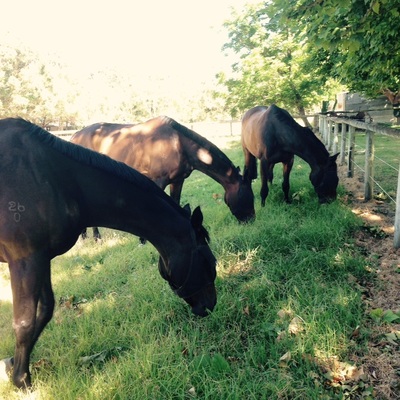
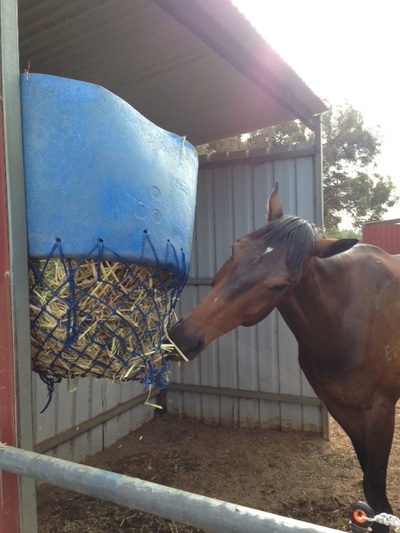
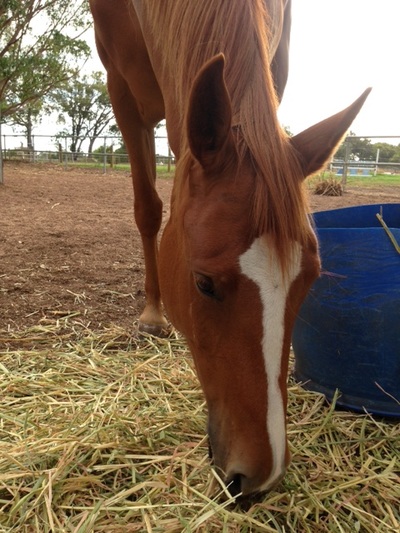
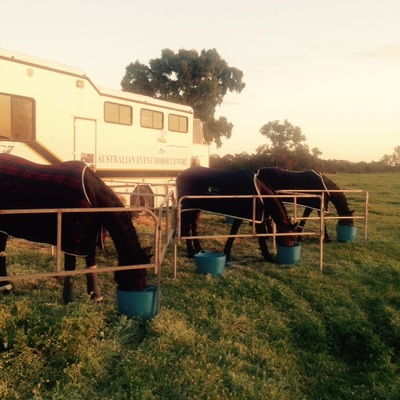
 RSS Feed
RSS Feed
